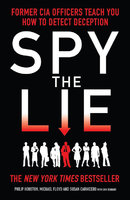On the first day of World War II, a Blenheim of 139 Squadron flew a reconnaissance sortie to locate German shipping, and for the next six years Bomber Command took the war to the enemy with increasing effectiveness. This comprehensive book tells the history of Bomber Command from its inception to its merging with Strike Command in 1968 during the Cold War. Strategic Bombing Theory started at the end of WWI, and by 1936 there was an expansion scheme in place calling for 68 squadrons with 990 aircraft, envisaging a four-engine bomber with a load of 4000 lb. On the outbreak of war, there was an average daily availability of 500 aircraft in 55 squadrons, and objectives included demoralisation of the enemy and the elimination of German defences. Wellington and Blenheim bombers initially proved vulnerable to German anti-aircraft fire and the nippy Me 109s, but in May 1940 the strategic bombing of industrial targets started on the Ruhr ("Happy Valley") using 4000lb blast bombs known as cookies. Stirling, Manchester and Halifax bombers all experienced initial problems such as icing, and in August 1941 only one in three bombers was achieving strikes within five miles of the target, with fuelling an additional problem. When "Bomber" Harris took command he immediately addressed a lack of aircraft and navigation aids. The de Havilland Mosquito proved an effective addition to the Pathfinder Force, while the American Strategic Bombing Offensive had the objective of reducing the enemy's level of civil resources below that needed to maintain the national economy. The bombing of Hamburg comes into this category and the attack on Peenemunde delayed the deployment of V-weapons, but the flattening of Dresden will always be controversial. At peak strength in 1944 the command could field 3,200 heavy bombers and 400 light ones. There was loss of 55,000 lives by the end of the war, and almost immediately the Command had to streamline for the nuclear arms race. Photos, diagrams, plans, maps, specifications and fascinating incidental information. 306pp, 18 annexes.
Additional product information



